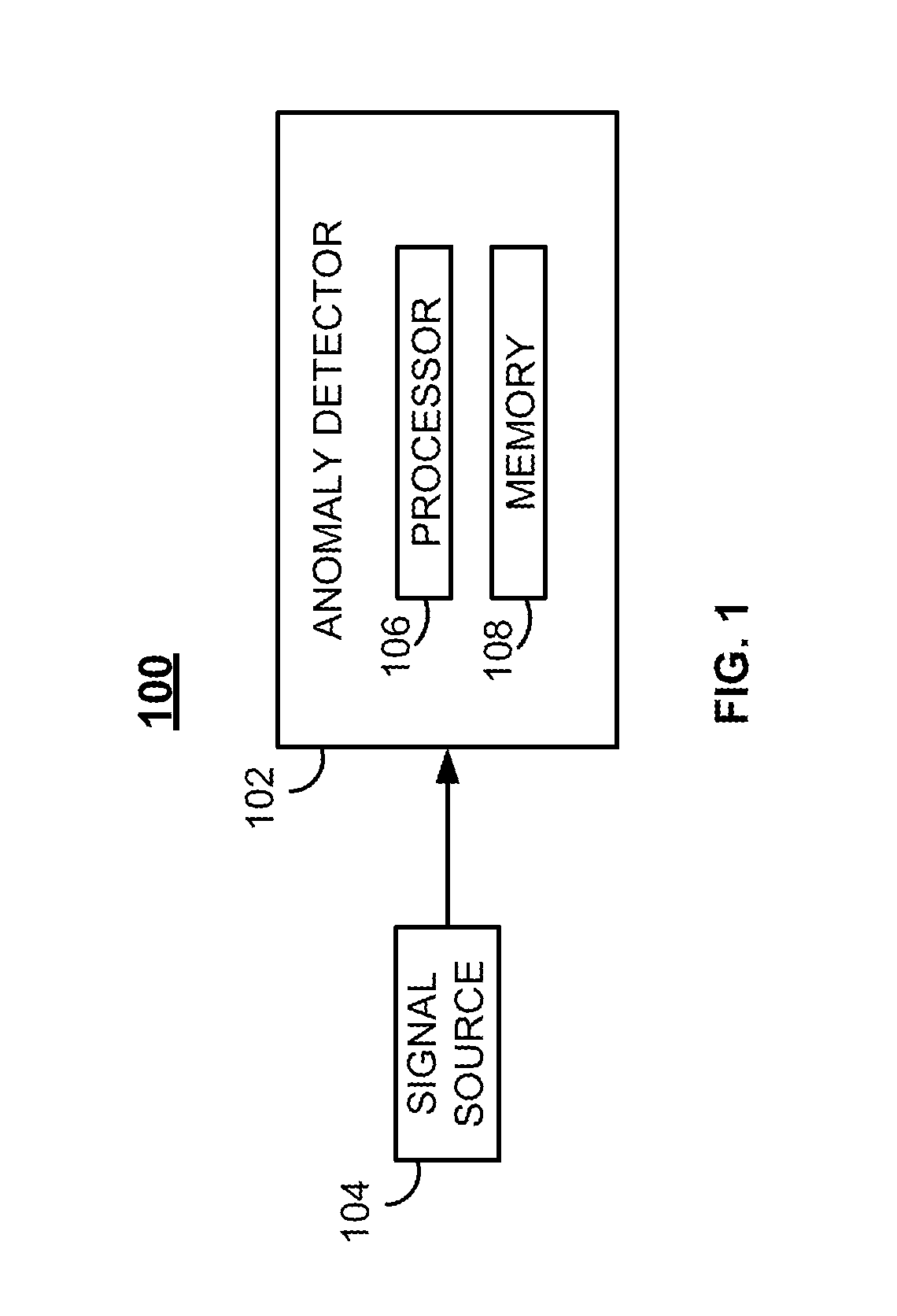Statistics-based anomaly detection
a statistical and signal technology, applied in the field of data analysis, can solve the problems of amplitude-based anomaly detection, many signals derived from real-world systems exhibit anomalous behaviors, and are susceptible to long-term trends and cyclic patterns in signals
- Summary
- Abstract
- Description
- Claims
- Application Information
AI Technical Summary
Benefits of technology
Problems solved by technology
Method used
Image
Examples
Embodiment Construction
[0030]To provide an overall understanding of the disclosure, certain illustrative embodiments will now be described, including a system for detecting an anomaly in a signal. However, it will be understood by one of ordinary skill in the art that the systems and methods described herein may be adapted and modified as is appropriate for the different applications being addressed and that the systems and methods described herein may be employed in other suitable applications, and that such other additions and modifications will not depart from the scope thereof.
[0031]FIG. 1 illustrates one embodiment of a system 100 for detecting anomalies of a signal. The system 100 includes a signal source 104 and an anomaly detector 102 including a processor 106 and a memory unit 108.
[0032]The signal source 104 provides a signal to the probability distribution estimator 102, and can be any source of a signal. The signal may be a discretized version of a continuous signal. As an example, the signal s...
PUM
 Login to View More
Login to View More Abstract
Description
Claims
Application Information
 Login to View More
Login to View More - R&D
- Intellectual Property
- Life Sciences
- Materials
- Tech Scout
- Unparalleled Data Quality
- Higher Quality Content
- 60% Fewer Hallucinations
Browse by: Latest US Patents, China's latest patents, Technical Efficacy Thesaurus, Application Domain, Technology Topic, Popular Technical Reports.
© 2025 PatSnap. All rights reserved.Legal|Privacy policy|Modern Slavery Act Transparency Statement|Sitemap|About US| Contact US: help@patsnap.com



